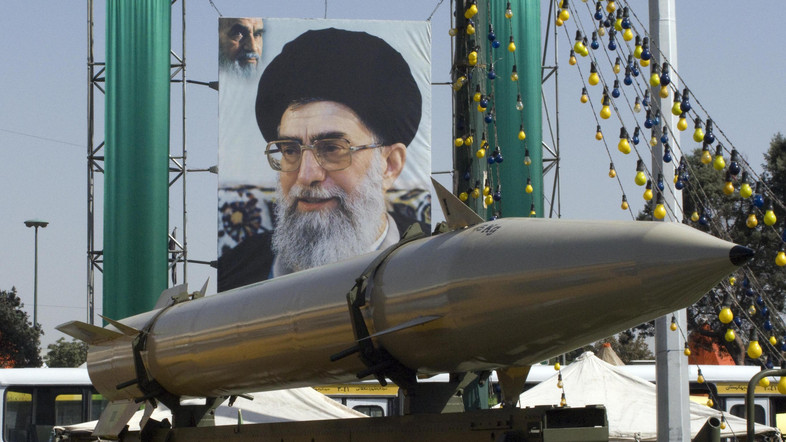A missile seen backdropped by a poster of the Iranian supreme leader Ayatollah Ali Khamenei, during a military exhibition to mark the 28th anniversary of the onset of the Iran-Iraq war (1980-1988), in Tehran, Iran, on Tuesday Sept. 23, 2008. (AP Photo/Hasan Sarbakhshian) اندفاع إيراني متجدد نحو القنبلة النووية د. ماجد رفي زاده/معهد غايتستون/04 تشرين الأول/2025 (ترجمة من الإنكليزية وتلخيص بتصرف كامل بواسطة الياس بجاني) A Renewed Iranian Push for the Nuclear Bomb Dr. Majid Rafizadeh/Gatestone Institute./October 04/2025 *Dr. Majid Rafizadeh, is a political scientist, Harvard-educated analyst, and board member of Harvard International Review. He has authored several books on the US foreign policy. He can be reached at dr.rafizadeh@post.harvard.edu *Follow Majid Rafizadeh on X (formerly Twitter) https://www.gatestoneinstitute.org/21949/iran-push-nuclear-bomb © 2025 Gatestone Institute. All rights reserved. The articles printed here do not necessarily reflect the views of the Editors or of Gatestone Institute. No part of the Gatestone website or any of its contents may be reproduced, copied or modified, without the prior written consent of Gatestone Institute.
اندفاع إيراني متجدد نحو القنبلة النووية د. ماجد رفي زاده/معهد غايتستون/04 تشرين الأول/2025 (ترجمة من الإنكليزية وتلخيص بتصرف كامل بواسطة الياس بجاني) الدكتور ماجد رفيع زاده، عالم سياسي، ومحلل حاصل على تعليم من جامعة هارفارد، وعضو مجلس إدارة في مجلة هارفارد الدولية. قام بتأليف عدة كتب حول السياسة الخارجية للولايات المتحدة. يمكن التواصل معه عبر: dr.rafizadeh@post.harvard.edu تابع ماجد رفيع زاده على منصة X (تويتر سابقاً) https://www.gatestoneinstitute.org/21949/iran-push-nuclear-bomb © 2025 معهد غاتستون. جميع الحقوق محفوظة. المقالات المنشورة هنا لا تعكس بالضرورة آراء المحررين أو معهد غاتستون.


